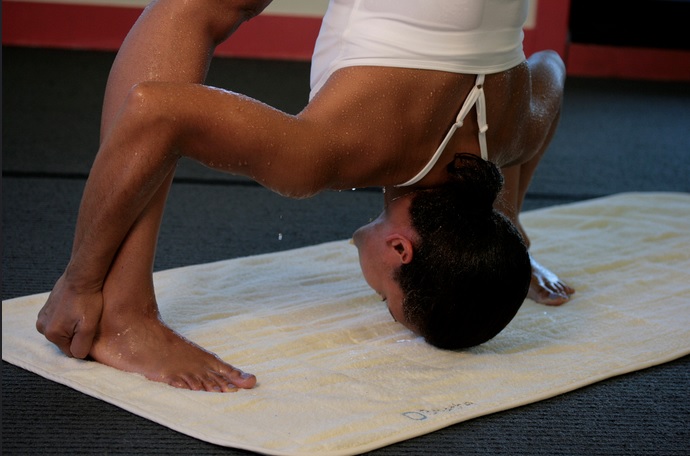
There was a time that I practiced hot yoga.
It began as a mere fascination, this idea of getting sweaty and doing yoga.
And I mean getting really sweaty. I got heavy into Bikram (known as the original hot yoga), and as it increased in popularity—sweating together in a tiny room with mirrors and carpeted floors—I started to wonder: why am I doing this?
It’s not like I questioned my reasons for doing yoga.
I questioned why I was doing this yoga.
But, I kept doing it anyways as it was a welcome comfort from the bitter cold of winter (as I live in Canada where we endure eight months of the stuff).
After a while, I noticed that the practice wasn’t doing anything for me. I wasn’t getting stronger, more flexible, or even losing weight—a testimonial of many dedicated hot yoga practitioners. Not that any of this was my goal, as I had been practicing yoga for years, but I started to question how the practice of asana (physical postures of yoga) in an unnaturally hot and humid environment could be beneficial.
For one, I knew that sweating in some form or another every day was good for me (the Lululemon manifesto bag taught me that). It also felt really good to drink a lot of water after practice, and drinking lots of water is good too (again, something I learned from the bag). Not to mention, I got a good look in the mirror at the hot guy with all the tattoos in the front row. (#win)
Jokes aside, I began to reflect on how the physical practice of yoga typically uses pranayama (yogic breathing methods) to create heat in the body. This heat, known as agni, is defined in Ayurveda as the internal fire that is created during the practice of asanas or the physical practice of yoga. A well-balanced agni produces good metabolism, healthy digestion and elimination, detoxification of the blood and organs and supports proper immune function.
That said, yoga practiced in a hot room actually contradicts this process as it creates external heat first, rather than internal.
One thing I do remember about science class is that the body will cool itself in an attempt to counteract external heat—hence, sweating. So instead of creating the heat internally through breathing techniques and poses—the very fabric that weaves the physical practice of yoga together—heat is already present. Thereby, agni is lost.
Furthermore, this internal fire can actually become disrupted. As the body is hot from the environment and the movement, it is unable to find a perfect balance as it sweats to cool down—only to recycle the heat over and over since it has no place to go, trapped in condensation in a hot room with other hot people!
What else I found extremely contradictory to the process of creating this internal heat is that of hydrating during asana practice. Like any physical activity, it is good to hydrate. But the key is to hydrate before and after, not during.
Most hot yoga studios nowadays not only encourage drinking during class, but many times throughout. So, if we are to look at the practice of yoga in terms of creating and maintaining a fire, tending to this fire and keeping it burning and alive throughout our entire practice, what do you think water does to said fire? Say “bye-bye,” Burning Man.
I don’t condemn others for doing hot yoga—heck, I even teach at a few hot studios. In my experience, though, hot yoga does not offer the mechanisms for creating and maintaining a healthy agni, which is so fundamental and beneficial to the physical practice.
Perhaps we can decrease the temperature in the hot room. Even just a little. And take away the mirrors, they’re too distracting.
~
~
Love elephant and want to go steady?
Sign up for our (curated) daily and weekly newsletters!
Apprentice Editor: Lauryn DeGrado / Editor:
Photo: Ron Sombilon / Flickr










Read 0 comments and reply